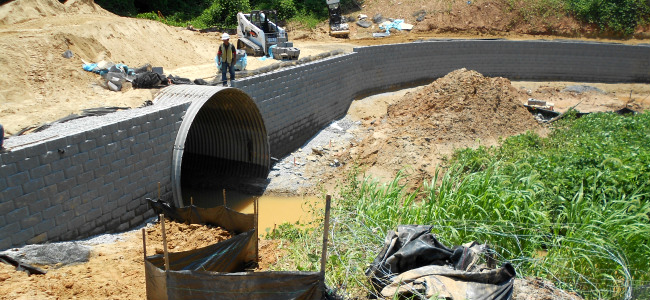 We built our first segmental wall in Charlottesville, Virginia about 20 years ago. I was recently passing through there and saw that the wall is still standing, just as we built it in the early 90s.
We built our first segmental wall in Charlottesville, Virginia about 20 years ago. I was recently passing through there and saw that the wall is still standing, just as we built it in the early 90s.
At the time, the locals called it “the Great Wall of Charlottesville.” It was pretty tall for that time–32 feet in height and 600 feet long. The sheer size of the wall presented challenges, particularly the embedded utilities. The good news is it looks just as solid today as the day we finished.
Since that time we’ve built a number of segmental walls and have had mostly successes, but a few failures along the way.
Segmental walls are typically dry-stacked CMU material placed without mortar. They are then tied back to the backfill material behind the wall with geogrid fabric. This prevents hydrostatic pressure impacts, will withstand slight movements in the earth and is a cost value when compared to other types of wall structures.
Our two most important lessons learned for success have been:
- Employ a structural engineer to design the wall. (Design build doesn’t work well in this application for several reasons.)
- Do not short yourself by trying to save money and using insitu backfill material. If it does not meet easily or exceed the design criteria of the soils, there may be problems lurking.
Beyond a good design, what’s the reason it is so important to use the proper backfill material? These walls are a gravity-type retaining wall which need the mass to resist the forces of the earth being retained by the wall. The backfill materials will need to have a certain dry unit weight and be able to stand at a certain natural angle, called the angle of repose.
If a segmental retaining wall fails, it’s often because of improper backfill material combined with the wrong length of geogrid fabric. And when they fail it generally is not pretty…


